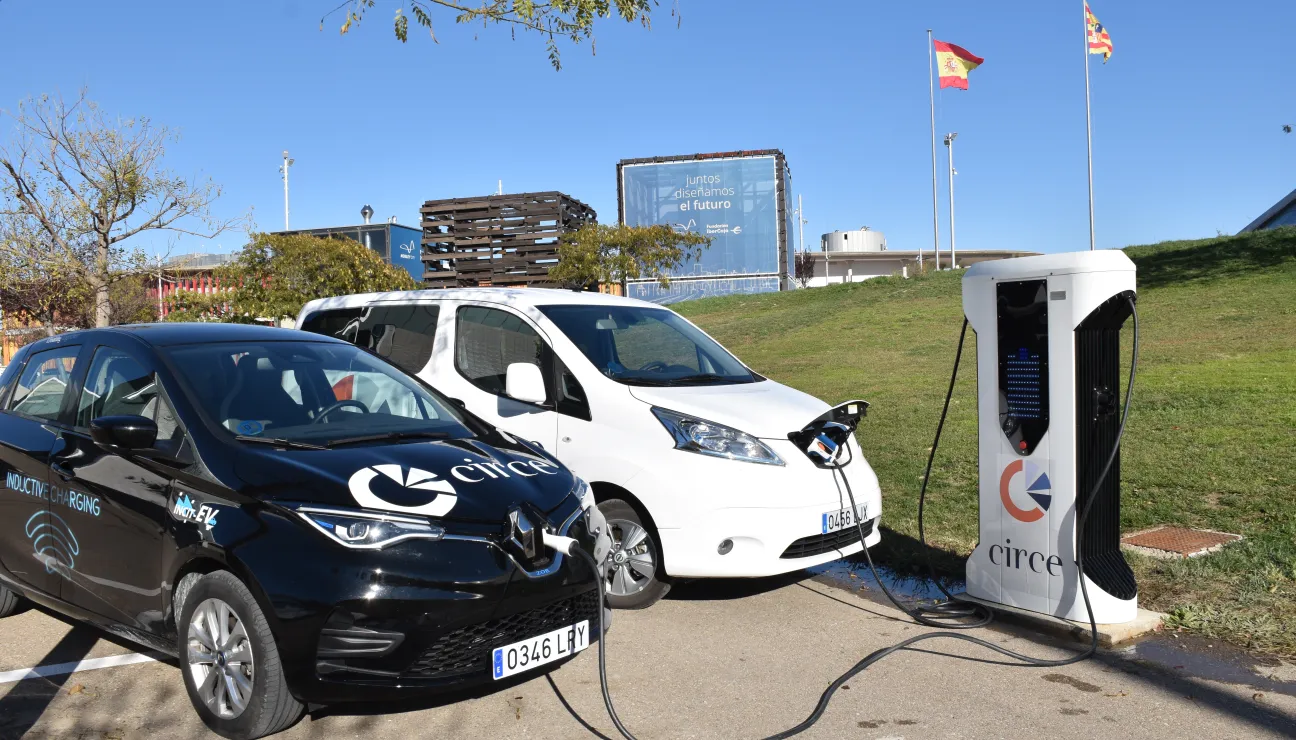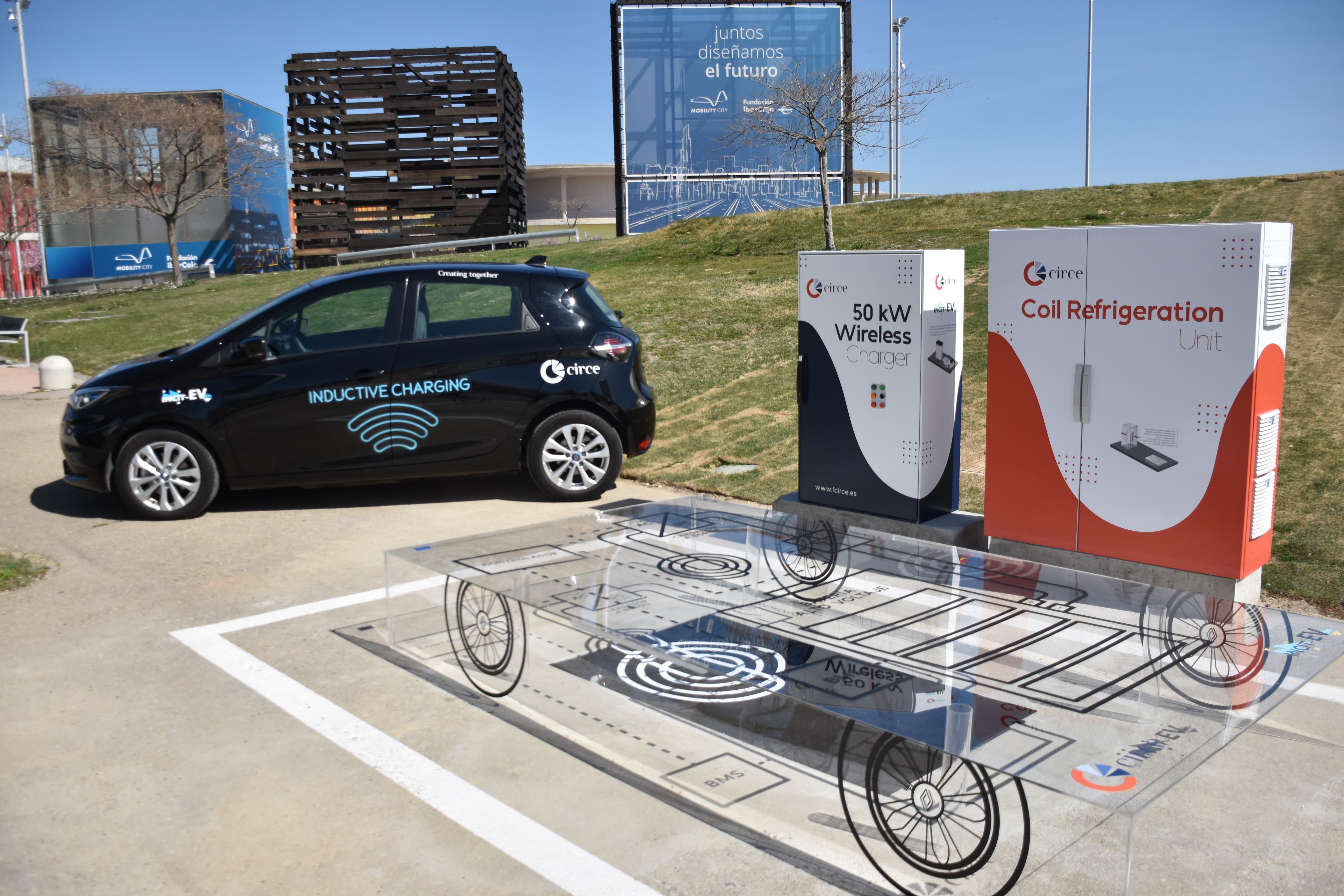Wireless charging: the answer to this Easter's "mirage"?

Was it a mirage that only happened in a few very specific locations, or was it a widespread problem?
The reality behind these lines at the chargers is no secret: there is still a long way to go in terms of charging infrastructure for Electric Vehicles (EVs). The key lies in innovation. While some see a problem, at CIRCE – Technological Center we see opportunities and real solutions about Mobility that we have been working on for years.
In Spain, the charging infrastructure for electric vehicles has experienced significant growth, albeit with certain limitations and regional disparities. According to a recent study by ECODES, in 2023, Spain reached 8,402 charging points and 24,020 connectors, representing increases of 35% and 44%, respectively, compared to the previous year. However, this development is mainly concentrated in urban areas, which accumulate 66% of the charging points, leaving rural areas, which constitute more than 80% of the peninsular territory, with only 14% of the total charging points.
To meet government objectives, 28,397 new connectors would need to be installed each year until 2030. Although all of Spain's Autonomous Communities have high-power chargers, the distribution is not uniform. For example, in 2022, only one in 50 publicly accessible connectors had a power of over 150 kW; in 2023, that figure improved to one in 25. Even so, in rural areas, the availability of high-power connectors is especially low.
This context highlights the importance of equitable planning and development of the electric vehicle charging infrastructure, ensuring that both urban and rural areas have adequate access to these essential services for the widespread adoption of electric mobility. The expansion and improvement of this infrastructure are not only crucial for the environment but also represent a significant investment in the future of sustainable mobility and an economic boost at the national level.
Dynamic wireless charging for electric vehicles
While some focus on current demand, at CIRCE – Technological Center we are committed to innovation to anticipate the future with more flexible and efficient solutions than traditional charging.
What if your vehicle could charge while you are on the move? This is what dynamic wireless charging offers. No more lines. No more unnecessary waits. The system CIRCE is working on represents a radical change in how electric vehicle charging is understood. Thanks to the European project INCIT-EV - coordinated by CIRCE – Technological Center - we have achieved a very important milestone: the first meters of dynamic wireless charging for electric vehicles. This is already a reality thanks to successful tests recently carried out at VEDECOM. This innovative dynamic and wireless charging technology can transmit up to 30 kW of energy with 85% efficiency while the car is in motion.
Moreover, the project faces a fundamental challenge for the democratization of technology: the interoperability of wireless charging. This project integrates up to three use cases of both static and dynamic wireless charging with different ground charger technologies and up to three different vehicles, which must be wirelessly charged by each of the ground chargers indistinctly.

What does this mean for users?
- Greater convenience: the ability to charge cars while in motion, saving time and increasing range.
- Reduced costs: fewer raw materials needed means smaller batteries, making electric vehicles more affordable.
- Sustainability: less need for materials translates to a simpler recycling process.
- Accessibility: drivers with reduced mobility can access electric vehicle charging comfortably and independently.
- Automation: this technology will lay the groundwork for autonomous electric vehicle charging.
- Optimized charging space: wireless charging allows for a higher density of charging areas, crucial for cities with high population densities.
Moving beyond conventional charging, wireless inductive charging technology is a bet on efficiency, speed, and the elimination of physical cable restrictions. This innovation can be crucial not only for individual users but also for freight transport and public services.
Recently, Tesla has also confirmed that it is developing a wireless charging system for electric vehicles. Users could simply park their cars on a platform or stationary device, eliminating the need to plug in the vehicles directly. This development is part of the company's ongoing effort to further ease the charging experience for its vehicle owners. And precisely, this confirmation comes after the brand acquired Wiferion, a company working on wireless charging for electric vehicles.
Innovations in Sustainable Mobility
At CIRCE, we have a long history of developing and validating charging systems. Especially important are the advances made in wireless inductive charging. With this new system, which we can apply to both static (stationary) and dynamic (in-motion) charging, charging points can be increased, and battery weight and dimensions can be reduced. This represents a great opportunity for sectors such as freight or passenger transport, also facilitating the deployment of electric vehicles outside cities. This does not mean that one must replace the other but rather that they can be complementary within a hybrid recharging infrastructure ecosystem.
Another key point of our R&D is the connection and integration of electric vehicles into the grid. In addition to minimizing their impact, we seek to improve grid stability, enabling bidirectional flows, and combining them with renewable energy sources and energy storage systems. This is the case with the Vehicle To Grid (V2G) Islas Baleares project, led by Acciona Energía and of which we have been technological partners, which has enabled the launch of the first bidirectional electric vehicle charging network in Spain.
A Turning Point in Electric Mobility
The situation experienced this Holy Week is a turning point, as it has made clear the urgent need to rethink and improve the charging infrastructure.
Congestion at chargers is a reminder that the future of electric mobility is not far off but already here. And at CIRCE – Technological Center, we are working with technology that meets these needs.
Discover how our technology is leading the way to more efficient and sustainable electric mobility.

Latest news






